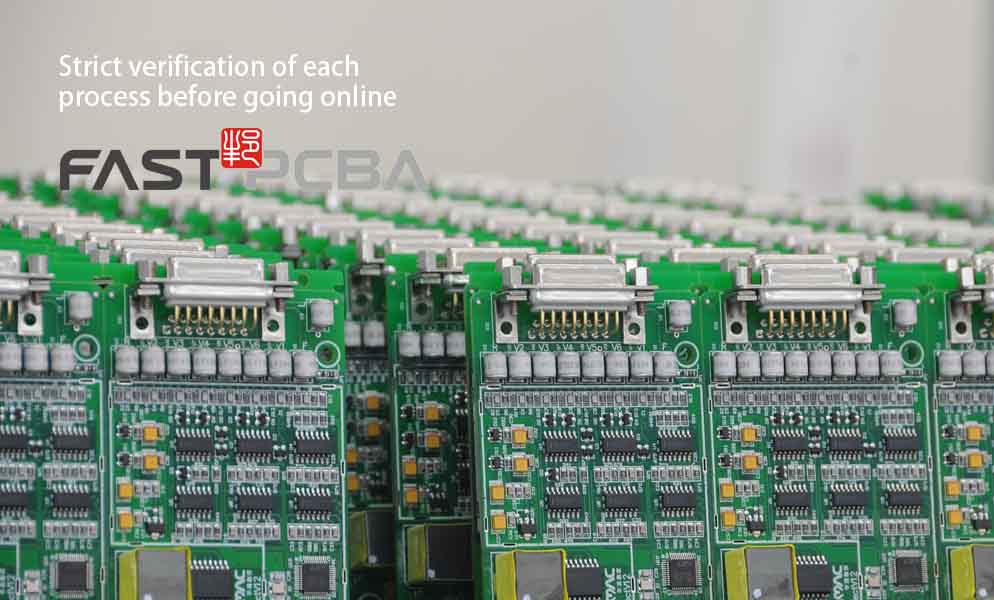About us
FASTPCBA Co.,Ltd
-
 Building 1, Senyang Electronic Technology Park, Guangming High-tech Park, Yutang Street, Guangming District, Shenzhen City.
Building 1, Senyang Electronic Technology Park, Guangming High-tech Park, Yutang Street, Guangming District, Shenzhen City.
-
 F:86-13418481618
F:86-13418481618
-
 pcba13@fastpcba.cn
pcba13@fastpcba.cn
 date:2019-11-16 11:36:58
date:2019-11-16 11:36:58
Printed Circuit Boards Thermal Design Introduction
Electronic devices will get hot during work. The failure rate of electronic products increases exponentially with increasing operating temperature. In general, high temperatures can degrade insulation performance, component damage, thermal aging of materials, cracking of low-melting welds, and loss of solder joints, ultimately leading to failure of electronic equipment. The purpose of the heat dissipation design is to control the temperature of all electronic components inside the product so that it does not exceed the maximum temperature specified by the standards and specifications under the working environment.

Since the external dimensions of SMD are only 20%~50% of DIP, more devices can be assembled in a printed circuit board per unit area, and SMT can also assemble components on both sides of the PCB. The power of SMT assembly is denser than inserted hole assembly devices. Therefore, the heat dissipation design of the surface mount board is particularly important. There are three main ways of heat dissipation: heat conduction, convection conduction and radiation conduction. The most effective way is heat conduction. By setting the heat sink, the heating element directly contacts the heat sink. This method has higher heat dissipation efficiency and can reduce the thermal resistance by 20%~50%. The device can be designed by using a lead frame material with good thermal conductivity, increasing the size of the lead frame, and designing a heat sink at the bottom of the device. For example, the new QFN package has good electrical and thermal performance.
The heat dissipation design of the printed board is mainly considered from the following aspects:
1 When designing, try to make the power distribution on the PCB as even as possible. Components with large heat dissipation are scattered as much as possible on the PCB. Reasonable arrangement of components, power heating components should be installed in the upper part as much as possible, temperature sensitive components must be keep away from heating elements inside the system. The heat sensitive components should not be placed directly above the heating elements and should be staggered in the horizontal plane. The power supply is usually a large heat source inside the system, so arrange its position and try to dissipate it directly to the outside of the system.
2 When designing the printed circuit, first of all, to ensure the current carrying capacity of the printed line, the width of the printed line must be suitable for the conduction of current, and can not cause unacceptable pressure drop and temperature rise. This requires coordination of circuit calculations and temperature field calculations. The spacing of adjacent lines should meet the requirements of international or national standards. The grounding of the multilayer board is in the form of a grid.
3 The method of using a heat dissipation layer. This method uses the heat sink as part of the printed circuit board and is sandwiched between the printed circuit boards like a "sandwich" structure. The material of the heat sink can be copper/invar/copper or copper-molybdenum/copper. Pay attention to the symmetry of the circuit board structure during design to avoid curling of the entire printed circuit board after heat. This method is suitable for double or multi-layer boards.
4. The method of using heat dissipation through holes. In this method, a heat dissipation hole and a blind hole are arranged on a printed circuit board having a heat dissipation plate, and when the soldering is performed, the solder fills the heat dissipation hole, and the heat is quickly transmitted from the conduction hole or the blind hole to the metal heat dissipation layer, and is laterally dispersed. ,
5. Use short path to minimize conduction heat resistance and accelerate component heat dissipation.
6 Increase the installation area, increase the contact area, minimize the conduction heat resistance, and make the conduction effect better.
7. Use materials with high thermal conductivity to minimize conduction heat resistance. For example, aluminum and copper have high thermal conductivity, which can reduce thermal resistance.
8. The plate is made of heat-resistant sheet, which requires a small coefficient of thermal expansion in the Z-axis direction. Metallized holes are not easy to break. The optional plates are: FR-5, quartz glass cloth + modified resin inside; usually used polyimide resin + glass cloth; polytetrafluoroethylene; BT resin, for mounting high density products, if the heat-dissipating effect is not ideal, a metal substrate or a ceramic substrate with good heat conduction effect should be used.
9. When the dustproof requirements are low, vent holes can be provided in the chassis. It is good to set the cooling fan separately for the whole system or key power devices (heating parts), or add a core for heat removal.
 Building 1, Senyang Electronic Technology Park, Guangming High-tech Park, Yutang Street, Guangming District, Shenzhen City.
Building 1, Senyang Electronic Technology Park, Guangming High-tech Park, Yutang Street, Guangming District, Shenzhen City.
 F:86-13418481618
F:86-13418481618
 pcba13@fastpcba.cn
pcba13@fastpcba.cn